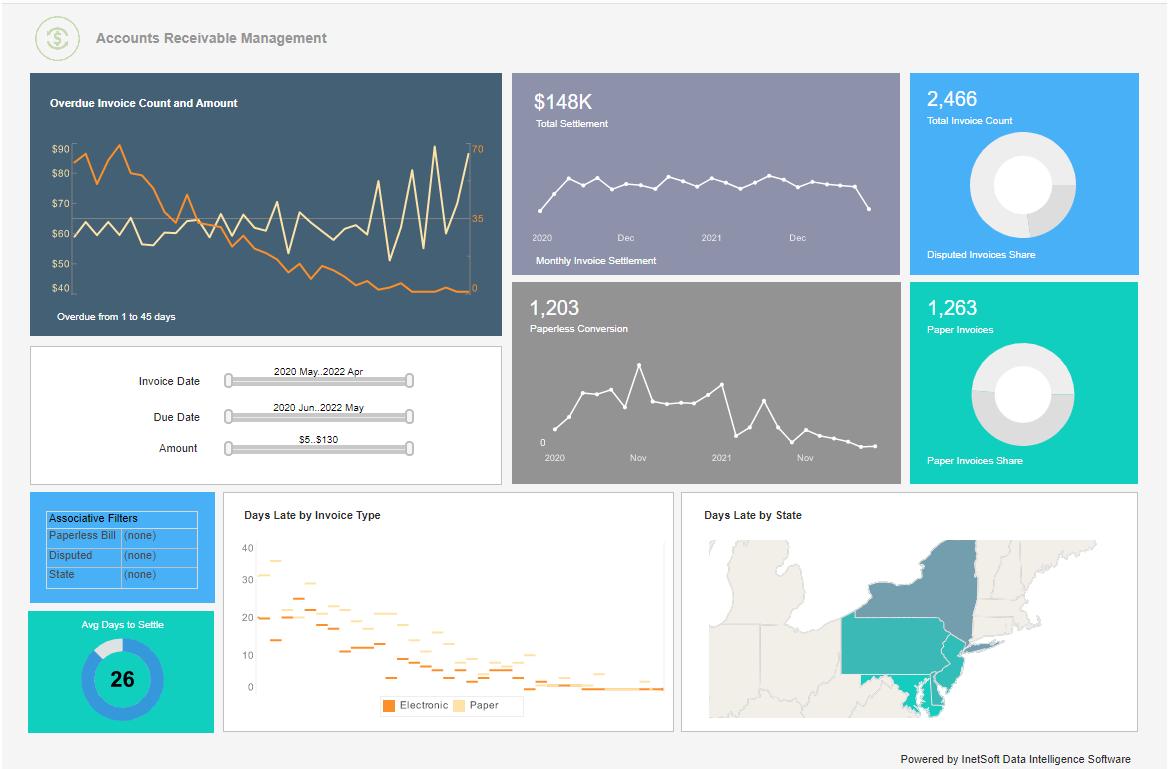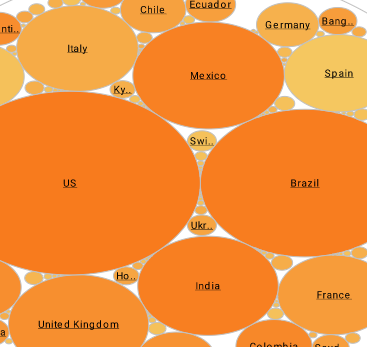Supercharge QuickBooks With Visualization and Reporting
Upgrading from QuickBooks’ built-in reporting tools to InetSoft’s open-source StyleBI platform represents a major leap forward in visibility, scalability, and strategic insight. QuickBooks is excellent for managing accounting, invoices, payroll, and financial transactions, but its native reporting is limited in scope and flexibility.
Businesses outgrow it as soon as they need to consolidate multiple data sources, visualize non-financial metrics, or allow interactive exploration of KPIs. StyleBI solves those pain points by turning raw data—from QuickBooks and beyond—into dynamic dashboards that bring together accounting, operations, sales, marketing, and inventory analytics in a single environment.
Transforming QuickBooks Reporting with StyleBI
QuickBooks reports tend to be static snapshots of accounting data. Users can see the profit and loss statement, balance sheet, or expense breakdown, but customizing these views or connecting them with external data is cumbersome. StyleBI, on the other hand, allows live connections to QuickBooks Online or Desktop databases while also blending in other data sources like CRM records, e-commerce transactions, web analytics, and even spreadsheets. This creates a holistic view of business performance, enabling decision-makers to correlate financial trends with operational and customer behavior patterns—something QuickBooks alone cannot achieve.
Another major reason to upgrade is the ability to visualize and drill down into trends. In QuickBooks, financial reports are mainly tabular, requiring users to export data into Excel or another BI tool to see patterns. With StyleBI, you can use interactive charts, gauges, heat maps, and time-series visualizations that reveal hidden relationships and seasonality within revenue, expenses, or margins. For example, a CFO could explore which product categories or customer regions are driving margin compression simply by hovering over dynamic dashboard elements instead of running multiple static reports.
For small to midsize businesses scaling up, one of QuickBooks’ biggest bottlenecks is multi-entity reporting. When you operate multiple business units, stores, or subsidiaries, QuickBooks makes it difficult to consolidate results without heavy manual intervention. StyleBI’s data mashup layer can automatically combine data from multiple QuickBooks company files, normalize chart of account structures, and produce unified dashboards that show company-wide KPIs in real time. This eliminates the need to manually export and merge financials in spreadsheets and provides leadership with an always-current view of enterprise performance.
Operational visibility also improves significantly. While QuickBooks focuses on financial metrics, StyleBI dashboards can track and correlate non-financial indicators such as customer satisfaction scores, on-time delivery rates, website conversion ratios, and production throughput. For example, a manufacturing business using QuickBooks for accounting can bring in production data from its ERP or MES system and overlay it with cost and revenue figures. This lets managers see how operational inefficiencies or supply chain disruptions affect profitability, turning accounting data into actionable intelligence.
Enhancing QuickBooks Analytics with StyleBI
Another advantage of StyleBI is automation and real-time updating. QuickBooks reports typically require manual refreshing, exporting, or distribution. With StyleBI, dashboards can refresh automatically based on live data connections or scheduled data pulls, ensuring decision-makers always have up-to-date insights without extra effort. Dashboards can also be shared securely with different teams through user roles and permissions, giving each department access only to the views relevant to them—finance, operations, sales, or executive management.
Customization is another key differentiator. QuickBooks reports are notoriously limited in customization options; formatting, grouping, and filtering require workarounds. StyleBI allows full design freedom: users can define calculated metrics, set thresholds for visual alerts, and configure hierarchies to drill from top-level summaries to granular details. For instance, a retailer can track sales trends across product categories and regions, click into a bar to view store-level results, and continue drilling down to individual transaction data—all within one dashboard session. This level of analytical storytelling is impossible within the static confines of QuickBooks reports.
Integration with other systems amplifies StyleBI’s value even more. A growing company might rely on Shopify or WooCommerce for e-commerce, HubSpot or Salesforce for CRM, and QuickBooks for accounting. StyleBI connects to all of these simultaneously, enabling cross-domain analytics—such as comparing ad campaign ROI with invoice payments, or analyzing how shipping times affect repeat purchases. Instead of making financial analysis an isolated process, StyleBI embeds finance into a broader performance intelligence framework where every dataset informs the next.
Scalability and Performance
Scalability is another factor driving the upgrade. QuickBooks was never designed to handle millions of records or concurrent reporting by many users. As companies grow, reporting performance degrades, and complex queries become slow or fail. StyleBI’s server-based architecture and optimized data caching handle large datasets with ease, allowing hundreds of users to access dashboards simultaneously without performance degradation. This makes it ideal for companies transitioning from small business to mid-market or enterprise scale.
Security and governance also become more robust. In QuickBooks, access control is limited to predefined user roles, often making it difficult to share partial reports without exposing full financials. StyleBI introduces row-level security, SSO integration, and fine-grained data access rules that let administrators control visibility by department, geography, or user role. For example, a regional manager can view performance metrics for their own branch but not others, ensuring compliance and data privacy while still promoting transparency.
Cost efficiency is another compelling point. Many organizations migrate first to StyleBI’s open-source version to reduce licensing costs compared to proprietary BI or ERP add-ons. Maintenance is lighter because StyleBI runs on a modern, web-based architecture with minimal IT overhead, and updates can be rolled out without disrupting ongoing operations. The combination of open-source flexibility and enterprise-grade functionality makes StyleBI particularly attractive for organizations seeking to modernize without inflating their IT budgets.
Perhaps the most transformative benefit of upgrading from QuickBooks reporting to StyleBI analytics is cultural: it changes how people make decisions. In the QuickBooks model, accounting reports are reactive—they tell you what happened. StyleBI shifts the organization toward proactive insight, alerting users to what is happening and what is likely to happen next. With predictive charts, KPI alerts, and scenario modeling, managers no longer have to wait for the end of the month to spot problems or opportunities—they can respond in near real time.


